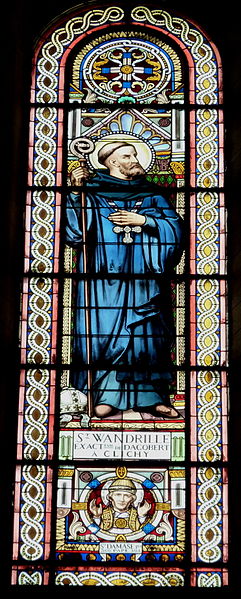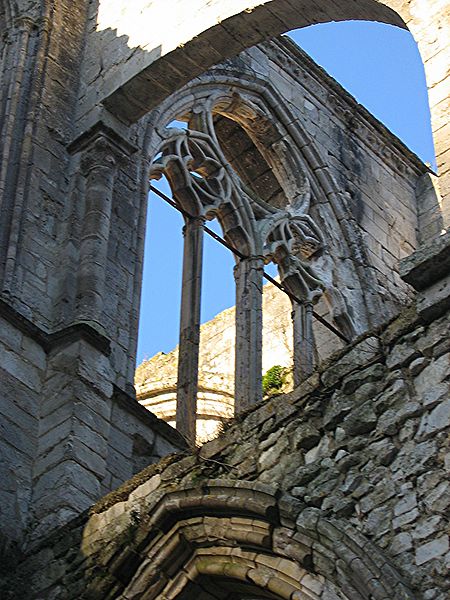St. Wandrille, or Wandregisilus, Abbot
[Abbot of Fontenelles, in Normandy.] He was nearly related to Pepin of Landen and Erchinoald, the two first lords in the kingdom of Austrasia; and in his youth was made count of the palace under Dagobert I. He was humble on the highest pinnacle of honors, and mortified amidst pleasures. To retrieve himself from the dissipation and other ill effects, of which hurry and much conversation with the world are dangerous occasions, he frequently retired into his closet, and there conversed much with God by devout prayer, and with himself by serious consideration on his own duties, condition, and spiritual miseries.In compliance with the will of his parents he took to wife a virtuous and noble lady; but, on the very day of his marriage, obtained her consent that they should both consecrate their virginity to God, which they did by a mutual vow on the same day. Wandrille, in 629, took the monastic habit at Montfaucon, in Champagne, an abbey then lately founded by St. Baudri. He afterwards built a monastery upon his own estate, called Elisang. In order to perfect himself in the most approved rules and exercises of an ascetic or monastic life, he took a journey to Bobio and to Rome. After his return into France, he spent ten years in the monastery of Romans, on the Isere. After which term, with the blessing of his abbot, he repaired to St. Oüen, archbishop of Rouen, by whom he was some time after ordained priest. In 648 the saint founded the famous monastery of Fontenelles, five leagues below Rouen, in the territory of Caux, in which he in a short time saw himself at the head of three hundred monks.
His life was always most austere; he slept little, was clad in sackcloth, and was most scrupulously exact in all the exercises of the monastic rule, in which, he was well assured, the sanctification of his state consisted. He went to receive the recompense of his labors on the 22nd of July, in 666, being ninety-six years old. He was buried in the church of St. Paul, now in ruins: his body was translated by St. Bainus into that of St. Peter’s, still standing; and in 944 to Ghent. It was lost in the persecution of the Calvinists in 1578; but an arm had been restored to Fontenelles, and the other arm had been given to the abbey of Brone, where these relics are still preserved.
See his two lives of the same age in Mabillon, and in Bosch the Bollandist, Julij, t. 5, p. 253. Also Gallia Christ. Nova, t. 11, pp. 155, 166, and the history of the translation of his relics to the abbey of Blandine, now St. Peter’s, at Ghent, and a history of his miracles, with F. Bosch’s notes, t. 5, p. 281; also, F. Toussaint-du-Plessis, Descript. Geogr. Hist. de la Haute Normandie.
from The Lives of the Saints, by Rev. Alban Butler, Volume VII. 1866.











